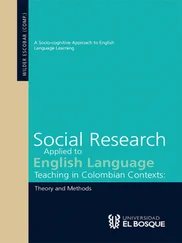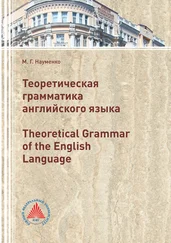Statement (full form)
Question
I am
am I?
you are
are you?
he is
is he?
she is
is she?
Kevin is
is Kevin?
we are
are we?
they are
are they?
Ann and Jenny are
are Ann and Jenny?
Notice that there is no short form for questions: for example, instead of he iswe usually say he’s, but we cannot say ‘ ’s he?’ instead of is he?
(Most verbs in English don’t form questions in this way, as we will see in later units – but this is always the way to make questions with be.)
Exercise 3
Turn these statements into questions – remember to use full forms!
The first one has been done for you.
1 I’m late.
Am I late?
2 Dave’s off work today.
_______________ ?
3 It’s cold outside.
_______________ ?
4 We’re in the right place.
_______________ ?
5 Everyone’s ready.
_______________ ?
6 You’re tired.
_______________ ?
7 They’re in the garden.
_______________ ?
8 Morgan and Eddie are here.
_______________ ?
9 Oliver’s outside.
_______________ ?
10 Jenny’s inside.
_______________ ?
8
Dialogue 8
Brian is having trouble with names and faces.
BRIAN:
Is that Gerry over there?
STUART:
Yes, it is.
BRIAN:
And who’s that with him?
STUART:
That’s Ben.
BRIAN:
And where’s Sandra?
STUART:
She’s over there, by the window.
BRIAN:
Oh yes – and who’s that with her?
STUART:
That’s Dave.
Dialogue 9
Ben has a list of names of people in the office, but he doesn’t know who’s who! He asks Justine to help, and she points them out as he reads out the names.
BEN:
Right. Where’s Helen?
JUSTINE:
That’s her, by the door.
BEN:
And Stuart?
JUSTINE:
That’s him, at the computer.
BEN:
And what about Gerry and Adrian?
JUSTINE:
That’s them, by the coffee-machine.
BEN:
And finally what about Justine?
JUSTINE:
That’s me, silly!
9
Language point 5 – personal pronouns
When we looked at the verb beearlier in this unit we saw the PERSONAL PRONOUNS that are used with verbs in English. Here they are again:
I
you
he
she
we
they
These are mostly used before verbs. Notice that in English we have different pronouns in the singular for males and females, but we do not make a distinction in the plural: theyis used for all third person subjects, whether male or female. And notice that youis both singular and plural, and both informal and formal – we don’t have a special form for addressing strangers; youis correct in all circum-stances.
All the personal pronouns except youhave two forms: the SUBJECT FORM and the OBJECT FORM:
SUBJECT FORM
I
you
he
she
we
they
OBJECT FORM
me
you
him
her
us
them
We use the object form of a personal pronouns when it is the OBJECT
of the sentence (see Grammatical terms) – we will look at this in a later unit – but we also use object forms in identification sentences, for example after That’s . . ., as in Dialogue 9, where Justine is pointing people out:
That’s him
not
‘That’s he’
That’s her
not
‘That’s she’
That’s them
not
‘That’s they’
That’s me
not
‘That’s I’
It is wrong to use the subject forms in this kind of sentence.
Exercise 4
Fill in the pronoun. The first one has been done for you.
1
Where’s Terry?
That’s him!
2
Where’s Janet?
That’s ___!
3
Where’s George?
That’s ___!
10
4
Where are Paul and Gerry?
That’s ___!
5
Where’s Su?
That’s ___!
6
Where are Ann and Tim?
That’s ___!
Idiom – what about . . . ?
In Dialogue 9, Ben asks Justine Where’s Helen?. Then he wants to ask the same about other people – he says What about Gerry and Adrian?
and What about Justine?. We use What about . . . ?to indicate that we’re asking the same question as before.
Here’s another example: Gerry wants to find out what kind of ice cream Adrian likes. This is how the conversation goes: GERRY:
Just answer yes or no, OK Adrian?
ADRIAN:
OK.
GERRY:
Do you like vanilla ice cream?
ADRIAN:
Yes.
GERRY:
What about strawberry?
ADRIAN:
Yes.
GERRY:
What about chocolate?
ADRIAN:
Yes.
GERRY:
What about lemon?
ADRIAN:
No.
GERRY:
And what about raspberry?
ADRIAN:
Yes.
GERRY:
Thanks for your help.
ADRIAN:
Don’t mention it.
Dialogue 10
Shamira introduces herself to someone who has just started work in the same office as her.
SHAMIRA:
Excuse me, I don’t know your name.
KATH:
It’s Kath – hello!
SHAMIRA:
Hello, Kath – my name’s Shamira. Pleased to meet you.
KATH:
And you.
11
SHAMIRA:
Do you know the people in our office?
KATH:
I know their faces, but I don’t know all their names.
SHAMIRA:
Maybe I can help you out there?
KATH:
Yes. That person by the photocopier – what’s her name?
SHAMIRA:
That’s Helen. And the man sitting with her . . .
KATH:
I know his name – that’s Adrian, isn’t it?
SHAMIRA:
Yes – he’s our boss.
Language point 6 – possessive adjectives
Between them, Shamira and Kath cleverly manage to use all the POSSESSIVE ADJECTIVES that correspond to the PERSONAL PRONOUNS
we’ve already met:
Personal pronouns
Possessive
adjective
Subject
Object
I
me
my
you
you
your
he
him
his
she
her
her
we
us
our
they
them
their
Exercise 5
Читать дальше












